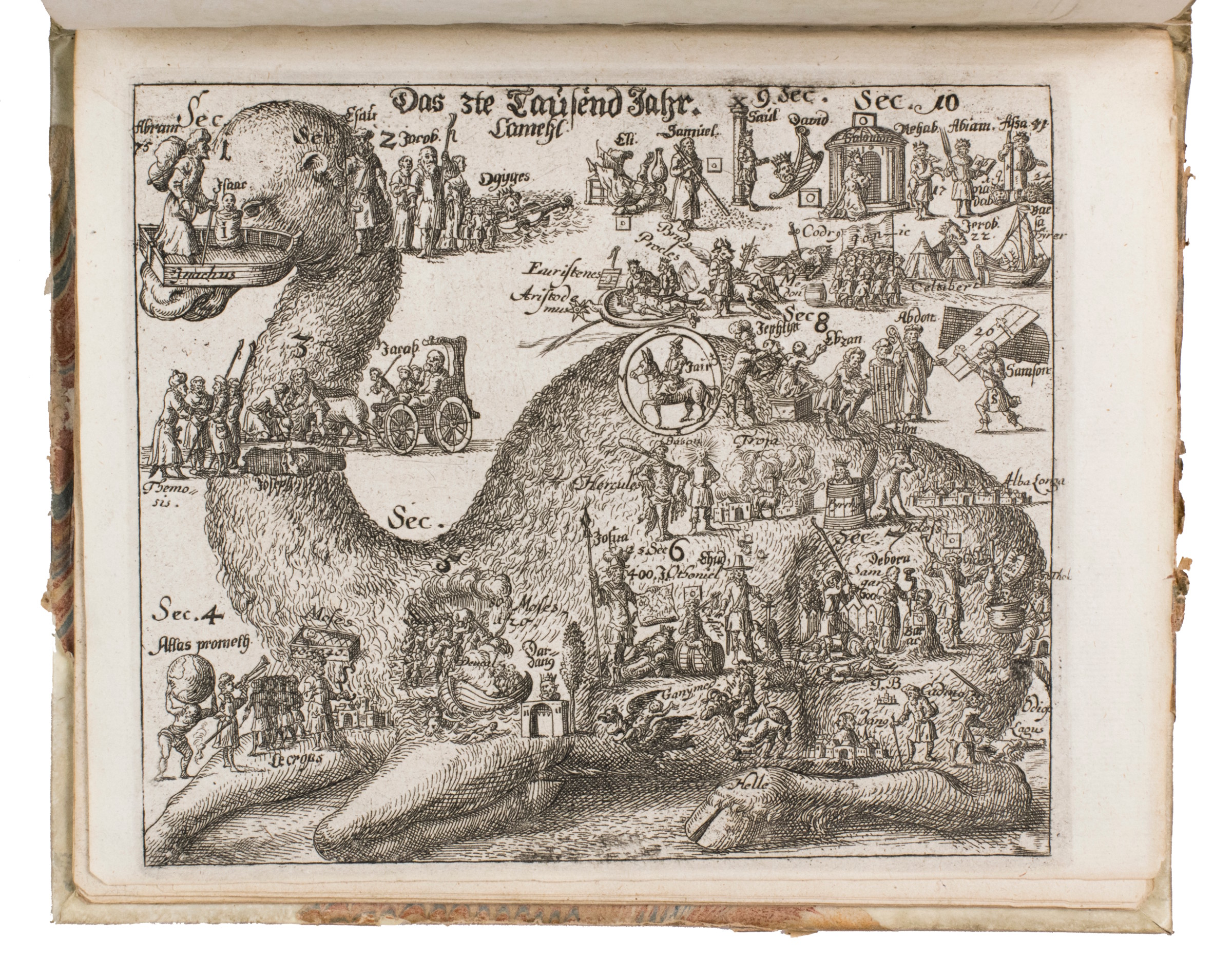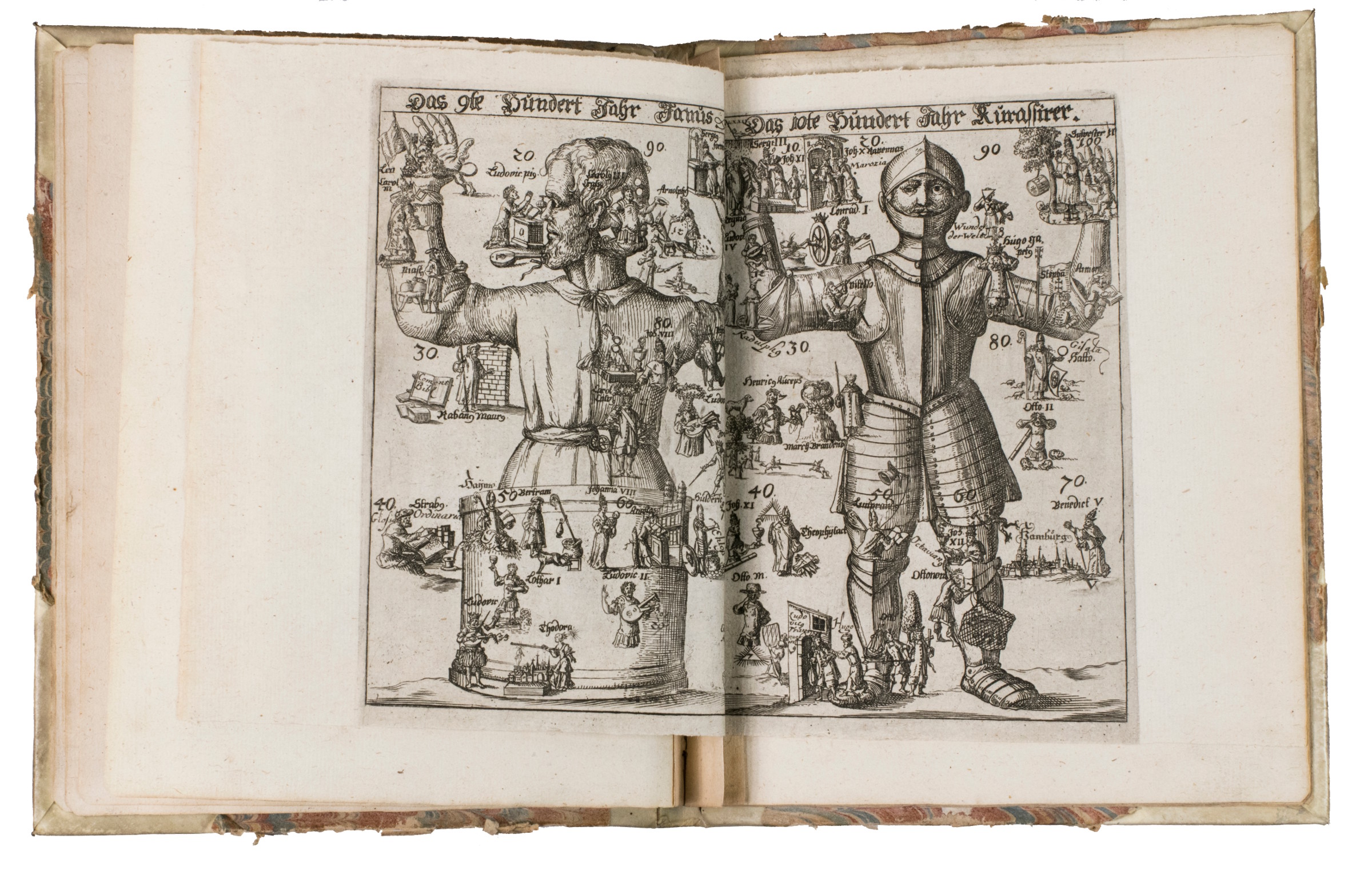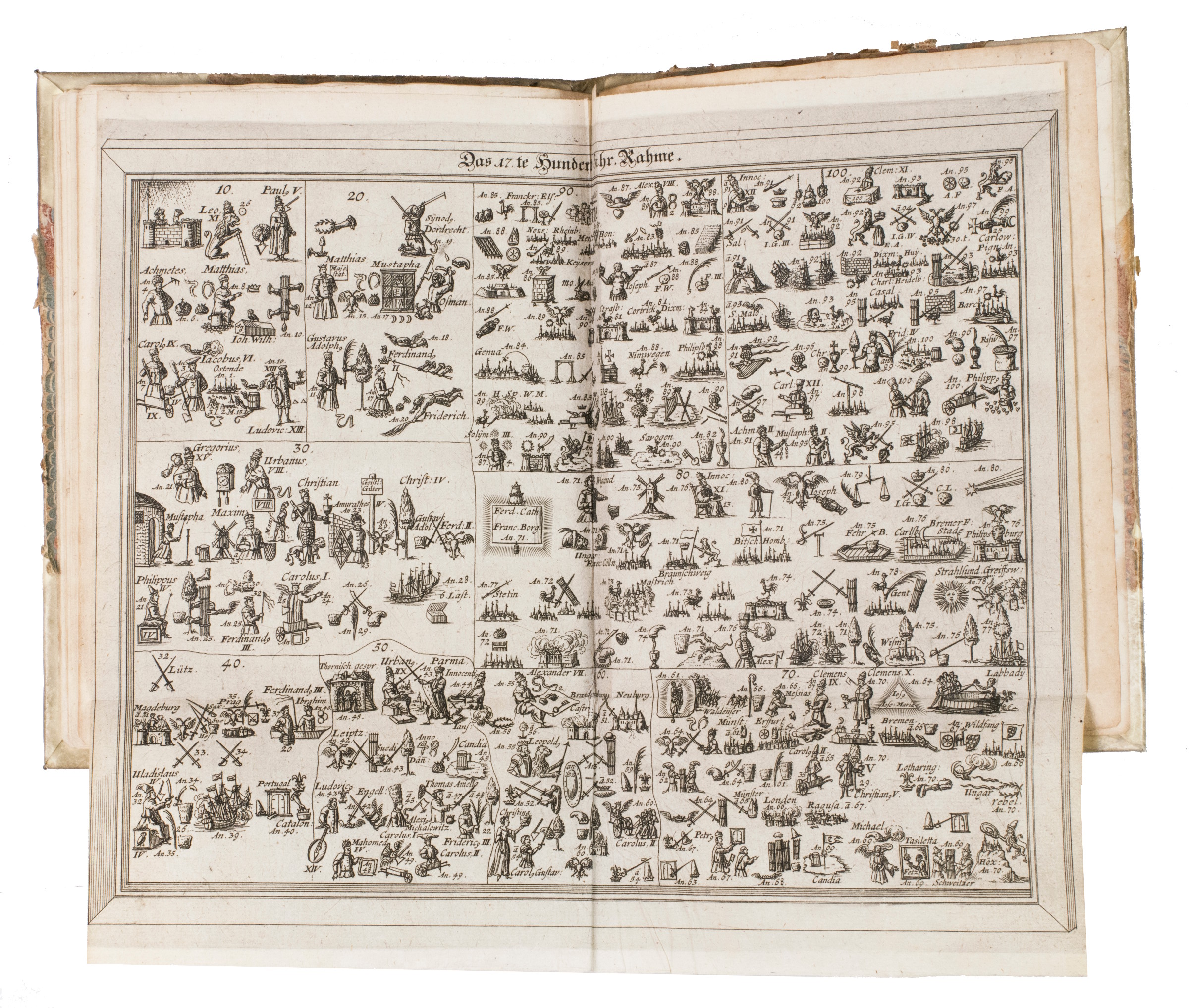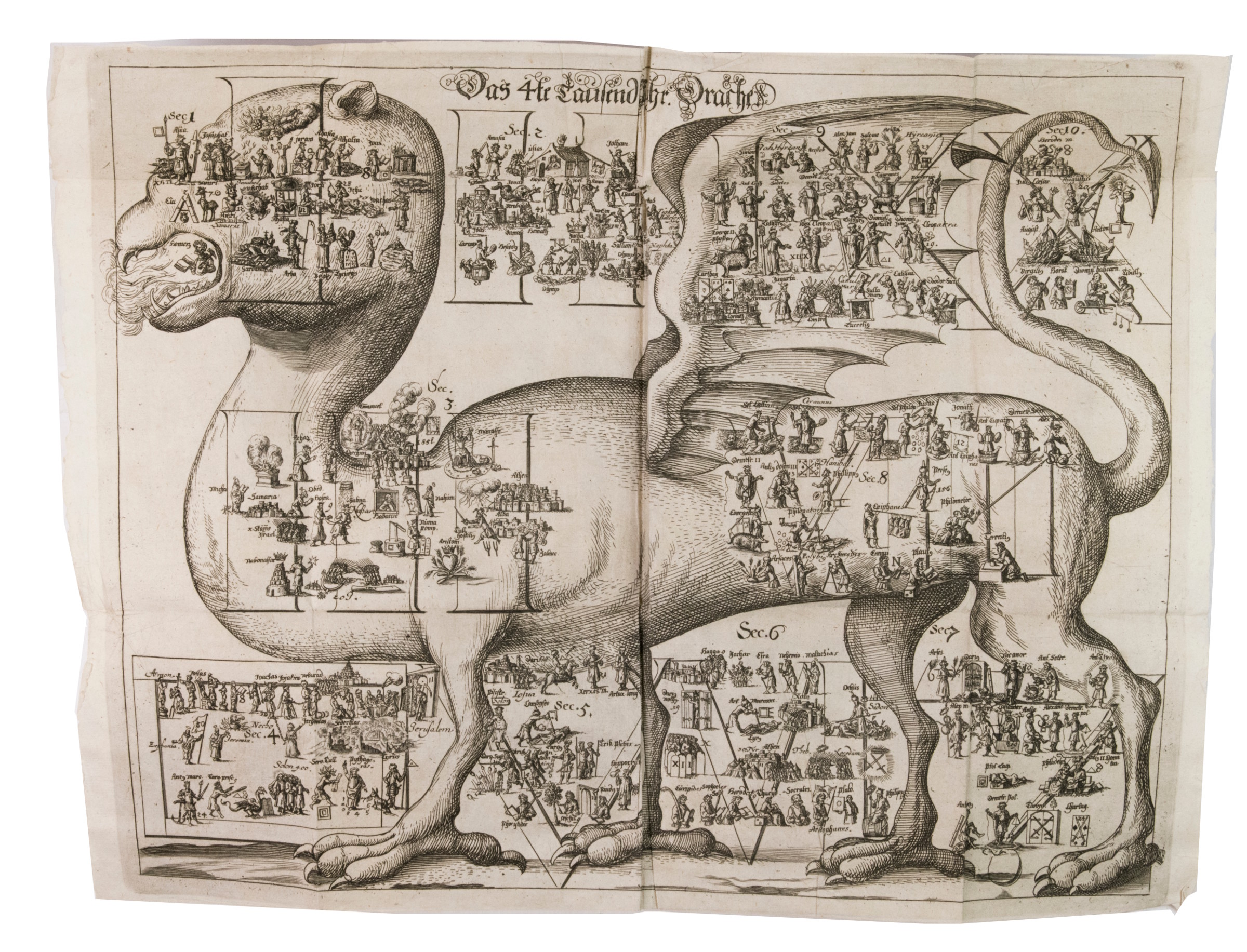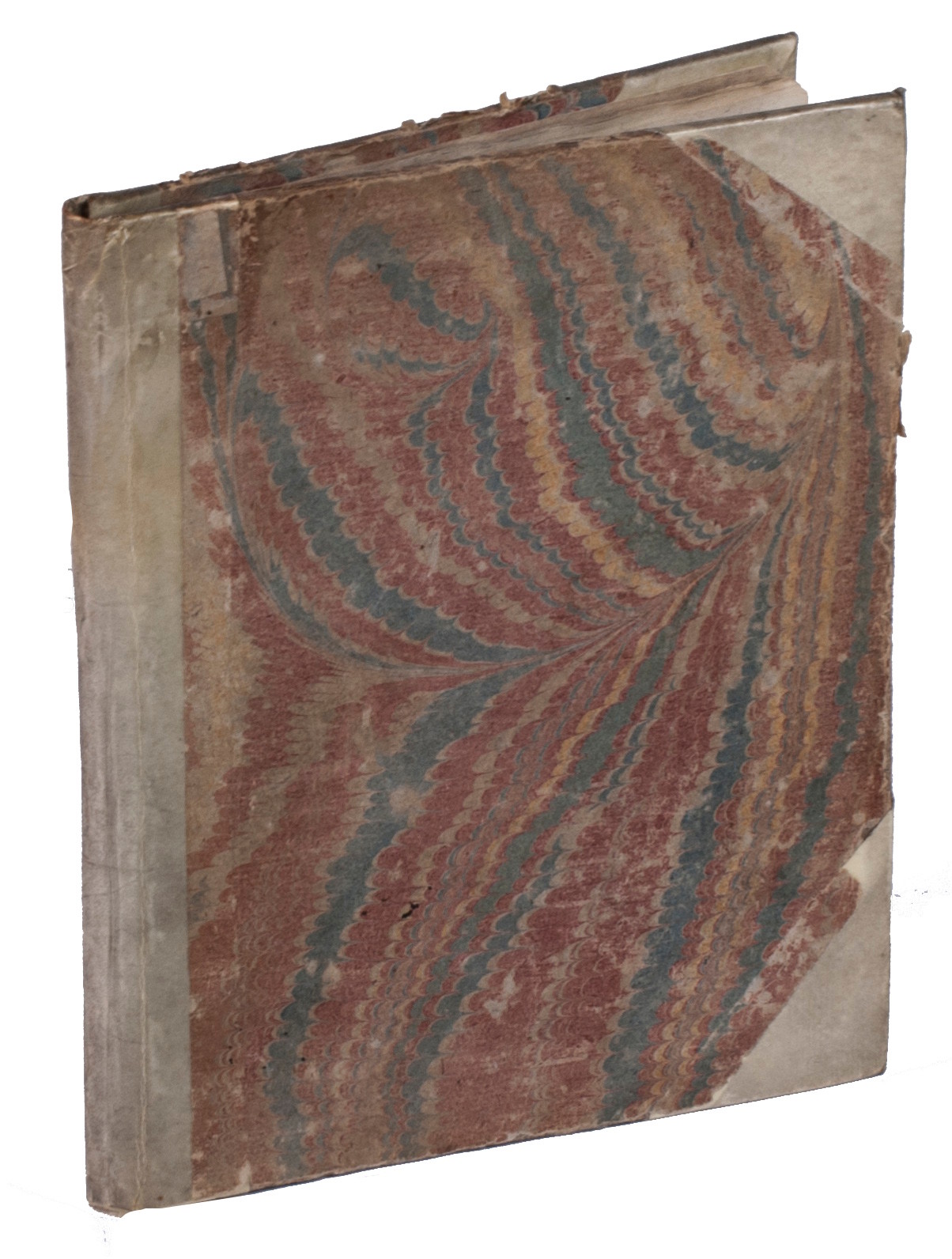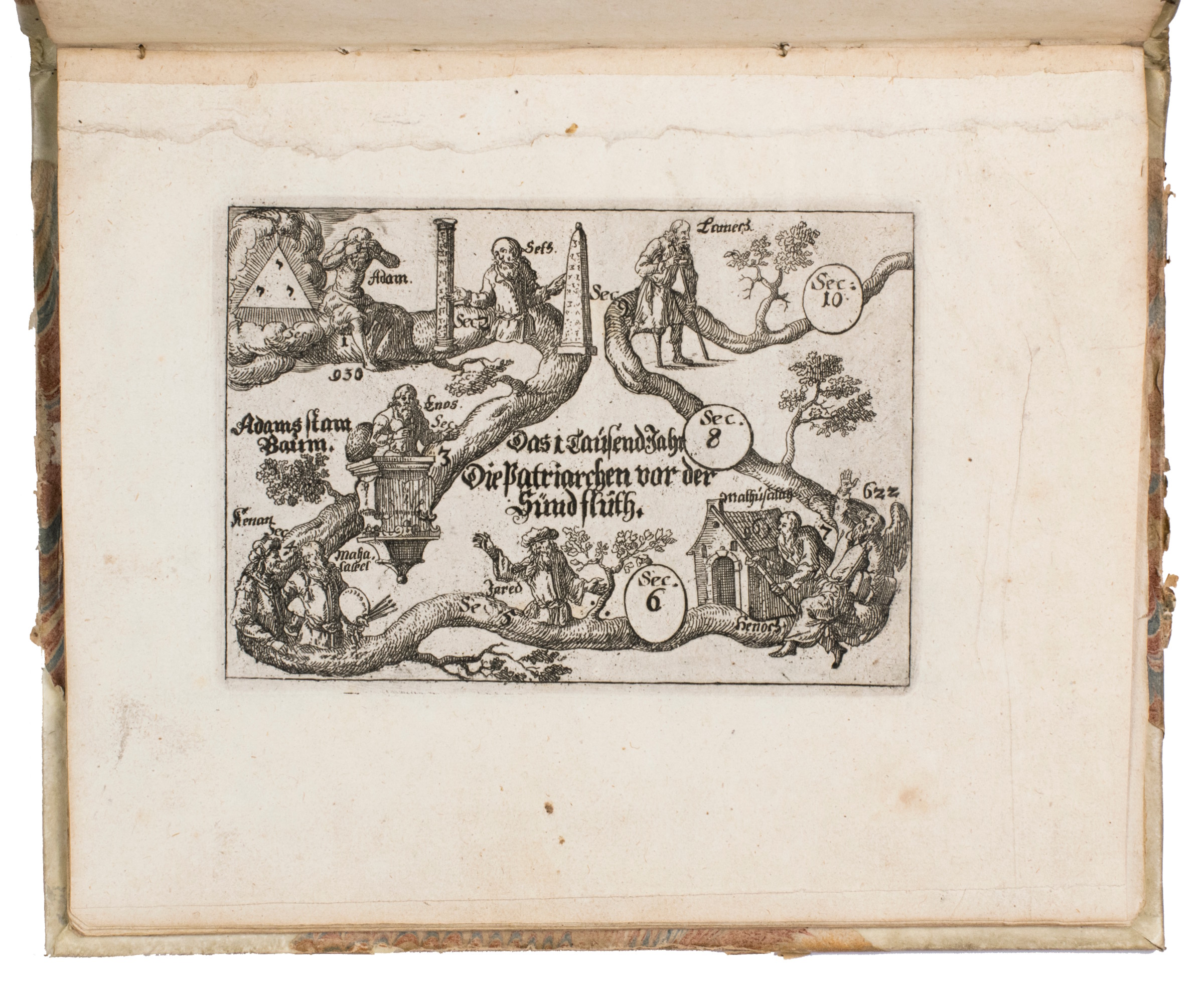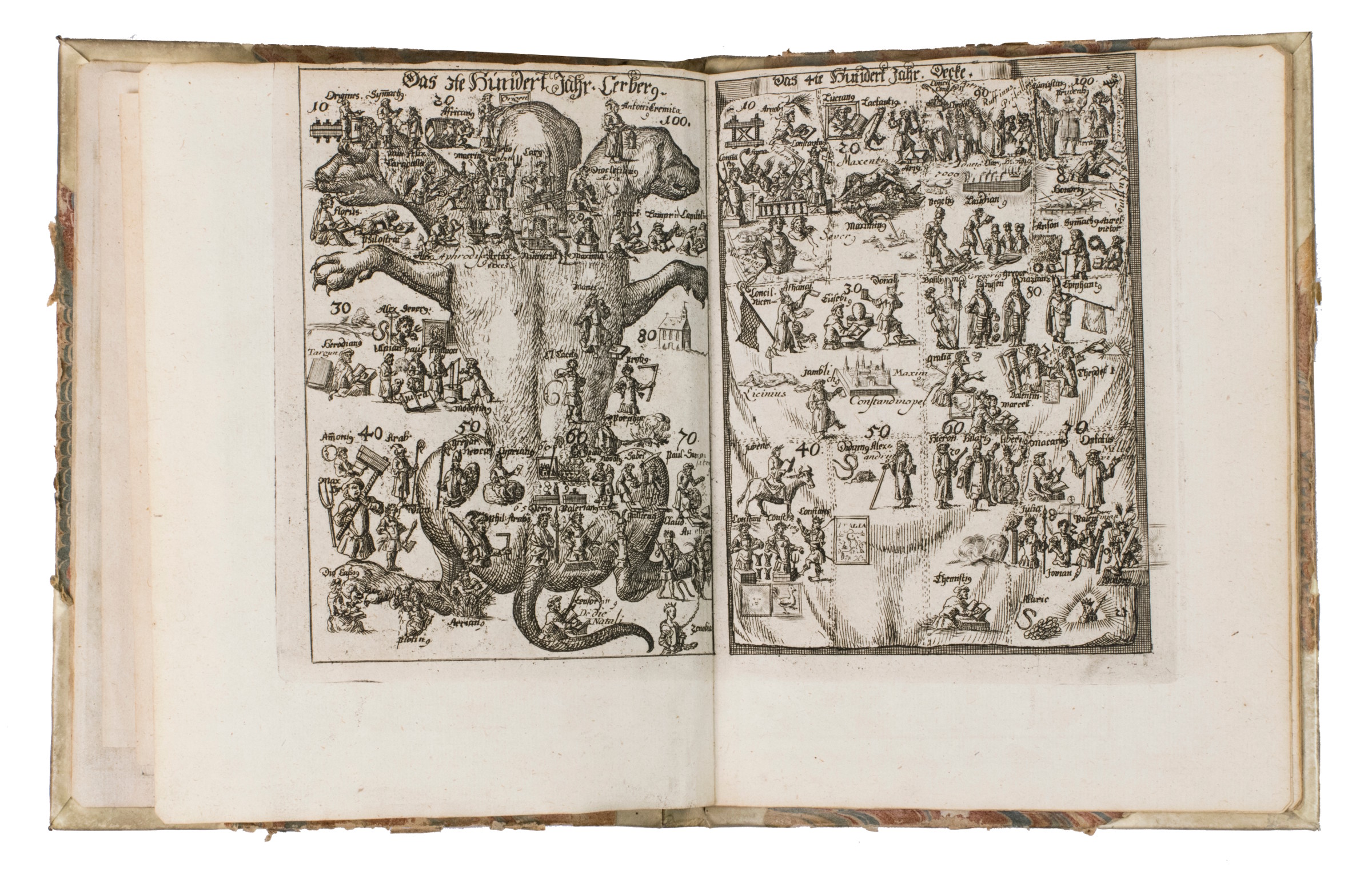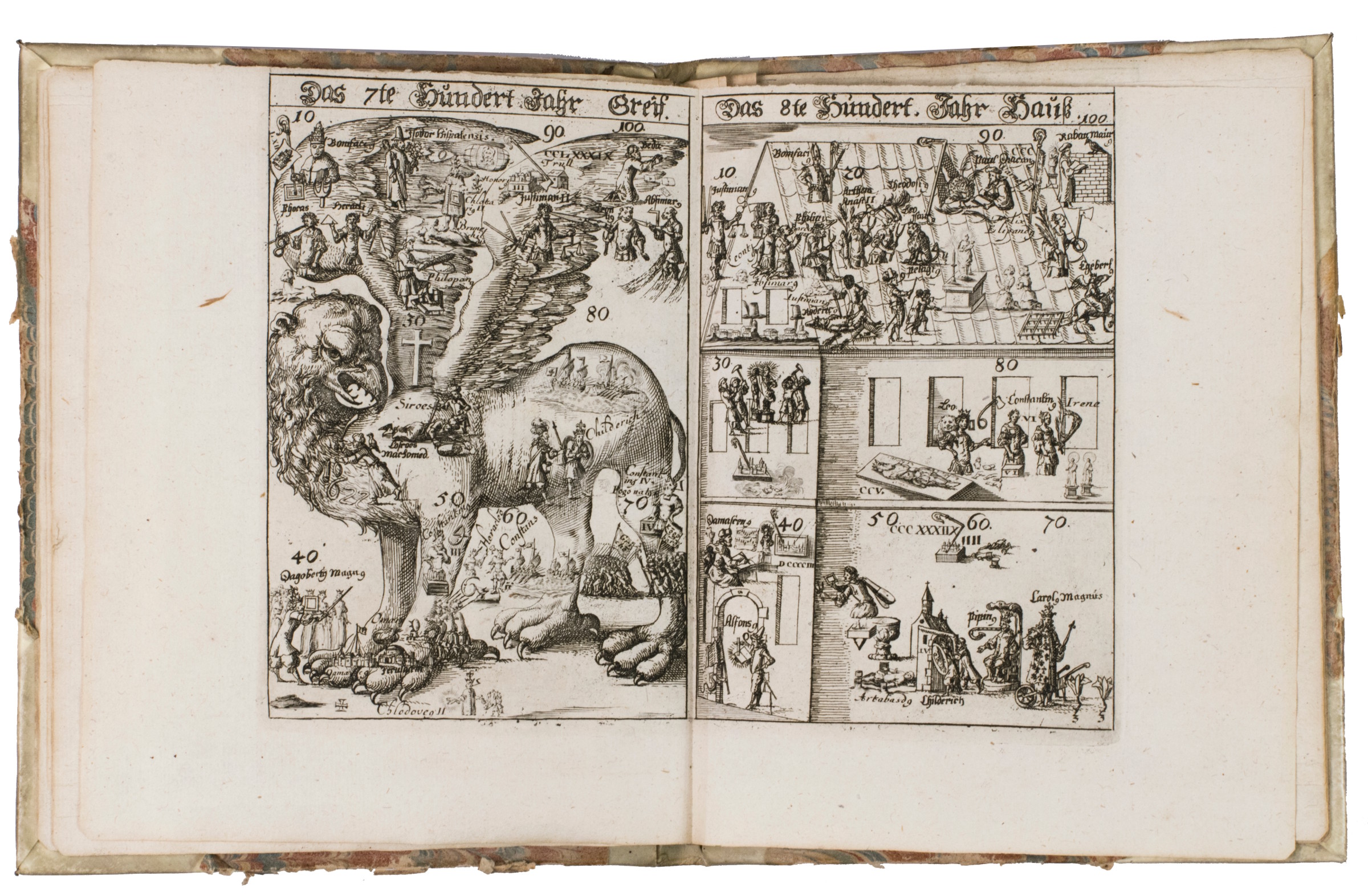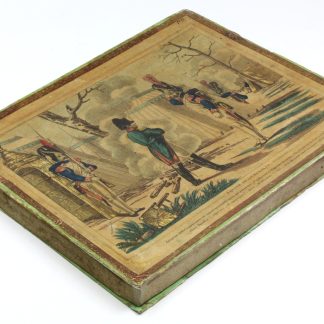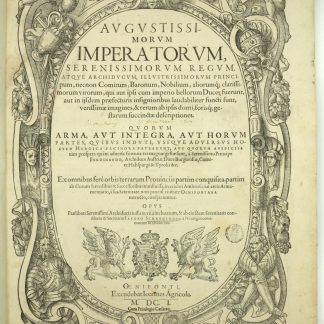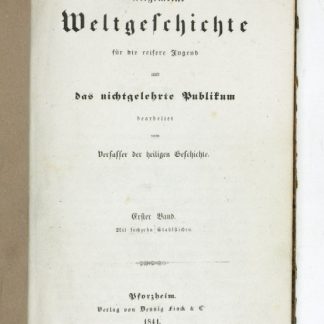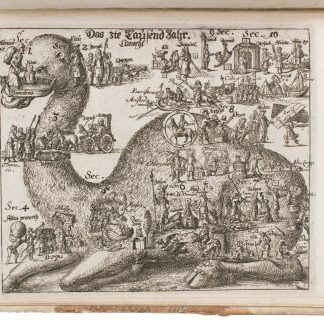Historische Bilder, darinnen Idea Historia Universalis, eine kurtze summarisch Abbildungen der fürnehmsten Geist- und Weltlichen Geschichte durch die vier Monarchien.
4to. 21 copper-engraved plates of various sizes; mostly 125 x 90 mm or 170 x 130 mm, but one large, folding plate 410 x 330 mm. Contemporary half vellum, with marbled paper sides.
€ 9.500,00
The twenty-one striking plates of the first edition of a remarkable mnemonic work by Johann Buno (1617-97), very rare on the market, showing the history of the world in 21 plates, from 4000 BCE until roughly 1670. Each plate depicts the history of a century or millennium: the first four plates show biblical and classical scenes of the 4th through 1st millennia BCE; the other plates depict a plethora of historical events of the 1st through 17th centuries CE.
Buno was a German philologist and Protestant theologian. He was rector of the Latin School in Lüneburg and later became professor in history, geography and theology. He developed his emblematic teaching method to help his students better to remember difficult concepts. The mnemonic techniques on which Buno's teachings were based had already been used by Simonides of Ceos in the 5th century BCE, and images had been used in schoolbooks by Jan Amos Comenius (1592-1670) shortly before Buno. However, Comenius used images to make learning easier, not to remember concepts better. It was Buno's invention to combine images, in the form of emblemata, with mnemonics.
Emblemata were relatively new at the time, as Andrea Alciato had published the first printed emblem book, "Emblematum Liber", in 1531. Buno must have recognized their potential quickly: he published "Tabularum mnemoricarum historiam universam", an educational work that taught the history of the world and the Christian church through images and fables, as early as 1547. This was followed by works on Latin grammar, law, history and the Bible.
Mnemonic techniques are based on the idea that it is easier to remember something if you associate it with a comical or strange concept. In the work of Buno, these concepts are visual. In his "Historische Bilder", each plate depicts a millennium or century. A basic motif, such as a tree, elephant, or glass vase, is allocated to every plate to make them easier to remember. They are not difficult to spot, because they fill the whole image. Within these motifs, smaller drawings are added. The drawings, numbered by decade, all summarise a historical or biblical event. For example, the drawing of the year 40 shows Christ on the cross, as well as his burial and ascension, and the descent of the Holy Spirit. The drawing for the year 1088 shows Godfrey of Bouillon taking Jerusalem by climbing over the walls (which actually took place in 1099), while for the 16th century, there are several drawings of Luther.
The detailed images make the historical events they depict easily recognisable, especially if one is already familiar with them. This unique history book is still useable today, but also offers interesting insights into the knowledge and teaching methods of the late 17th century.
With an owner's inscription on the first flyleaf ("F. Stern. const. 3 fl.").
The present copy contains only the plates, not the text. Edges scuffed, small ink stains on the front, remnants of tape on the front board near the head of the spine, remnants of a label on the back pastedown, endpapers slightly foxed. The top margin of many of the plates is trimmed somewhat closely but without loss to image. The plates are fine and clean. Overall in good condition.
VD 17, 3:313263C. BM General Catalogue IV, 836. Cf. ADB III, 540f. N. Dorn, New Acquisition: Justinian's Institutes in Emblemata, Johannes Buno's Memoriale Institutionem Juris. Library of Congress blogs, 2021.

